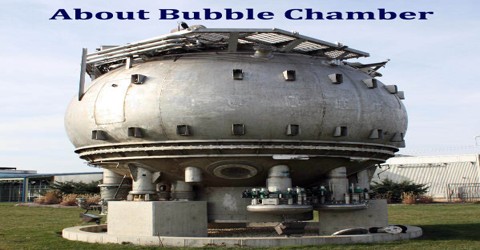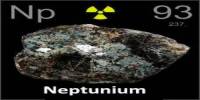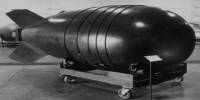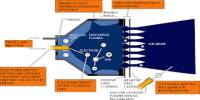About Bubble Chamber
Definition
Bubble Chamber is a chamber of superheated liquid in which the path of an ionizing particle is made visible by a string of vapor bubbles. It is designed to detect charged particles through the tracks of bubbles present in a chamber consisting of liquefied gas or liquid hydrogen. It was invented by Donald Glaser in 1952.
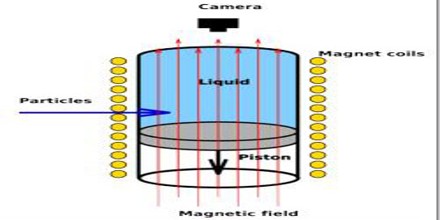
This bubble chamber consists of a sealed cavity that is filled with a liquefied gas in order to reduce the inside pressure. Liquid hydrogen and helium are the most commonly used liquids in the bubble chambers, and a controlled device to maintain these gases in their liquid state. For applications requiring very dense liquids, a variety of organic compounds can be used.
Cloud chambers work on the same principles as bubble chambers, but are based on supersaturated vapor rather than superheated liquid. While bubble chambers were extensively used in the past, they have now mostly been supplanted by wire chambers and spark chambers. Historically, notable bubble chambers include the Big European Bubble Chamber (BEBC) and Gargamelle.

The Bubble Chamber works as follows:
- The liquid (these figures are for a roughly 2:1 neon-hydrogen mix) is prepared and held under a pressure of about 5 atmospheres (1atm=105 Pa).
- Just before the beam arrives from the accelerator, the pressure is reduced to about 2 atmospheres making the liquid superheated.
- As charged beam particles pass through the liquid they deposit energy by ionising atoms and this causes the liquid to boil along their paths.
- Some beam particles may also collide with an atomic nucleus – this is what we want to study – and the charged particle products of such interactions also ionise the liquid causing trails of bubbles to form.
- The bubbles formed are allowed to grow for a few ms, and when they have reached a diameter of about 1 mm, a flash photograph is taken on several views so as to enable the interactions to be reconstructed in 3-dimensions.
- The pressure is then increased again to clear the bubbles and await the arrival of the next burst of beam particles.
Bubble Chambers now in operation are rectangular or cylindrical in shape, range in sensitive volume from a few cubic centimeters to ten liters or more, and operate with various liquids including hydrogen, helium, xenon, diethyl ether, propane and solutions containing more than one component. The bubble chamber is useful for analyzing high-energy particles. It is also used for precisely measuring rare decays with extremely short lifetimes.

Working Principle of Bubble Chamber
When the particles of liquid hydrogen enter the chamber, a piston immediately reduces the pressure inside this cavity, which in turn lowers the boiling point of liquid, leaving the liquid heated at the appropriate temperature.
When a charged particle passes via this heated liquid, it creates tiny gas bubbles. The size of the bubbles increases as the chamber expands, so that the bubbles can be illuminated and photographed. In the presence of a magnetic field, the charged particles travel along a curved path, and the degree of curvature is dependent on the charge, speed and mass of the particle.
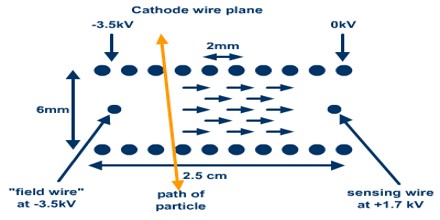
Drawbacks
Some of the major drawbacks of a bubble chamber include the following:
- Slow event reconstruction and film measurement.
- The liquid within the chamber serves as both a target and detector, and hence bubble chambers cannot be used with modern colliding-beam machines.
- The superheated phase must be ready at the precise moment of collision, which complicates the detection of short-lived particles.
- Bubble chambers are neither large nor massive enough to analyze high-energy collisions, where all products should be contained inside the detector.
Benefits of Bubble Chamber
The key benefits of a bubble chamber include:
- It provides real three-dimensional images at a good spatial precision of 10-150 µm.
- It is capable of storing holographic events, which can in turn improve the resolution to 6µm.
- It can be subjected to a magnetic field for accurate detection of momentum.
- The number of interaction inside the bubble chamber can be increased by the higher density of the liquid.
- It ensures 4p solid angle coverage of particles.
